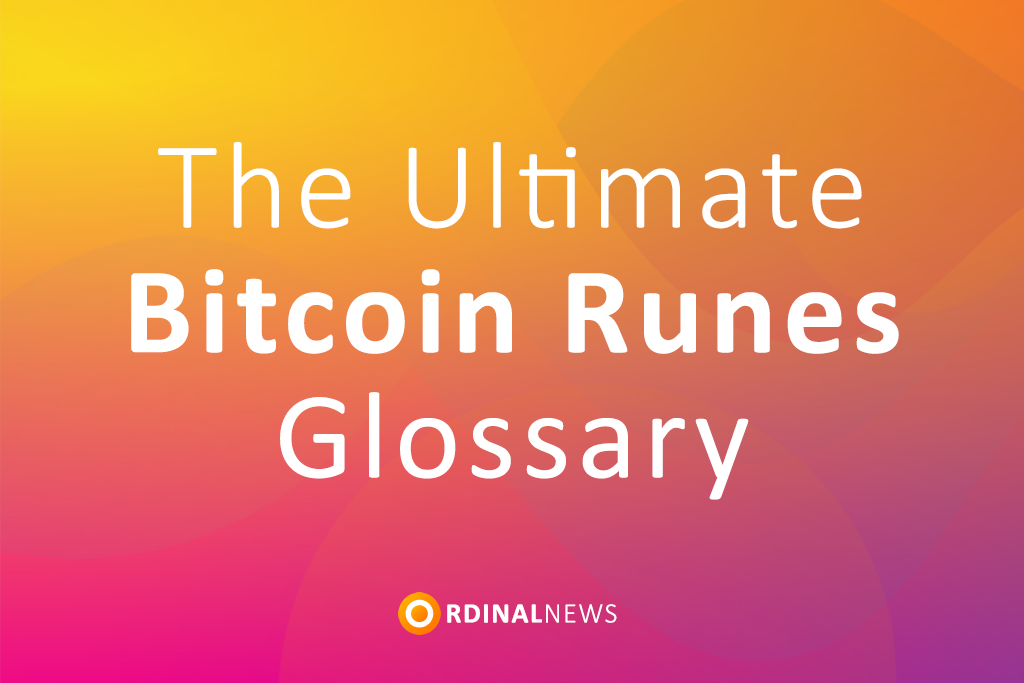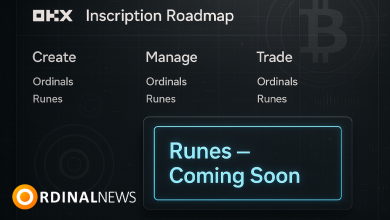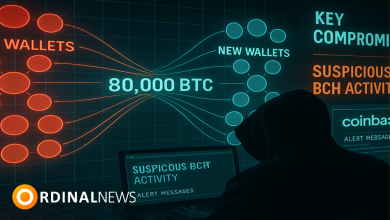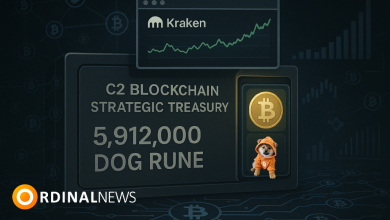The Ultimate Bitcoin Runes Glossary

The Ultimate Bitcoin Runes Glossary
Rune
A fungible token on Bitcoin (for example a memecoin or a utility token)
Etch
How a Rune comes into existence (once set these properties are immutable)
Rune Name
The unique ticker for a Rune that can consists of the letters A through Z and must be between 1 and 28 characters long (at first only 13+ character Names are available when etching but every 3 months the character count requirement drops by 1 until in 4 years all Names are available)
Spacer
An optional bullet that can be added to a Rune Name when etching to make it more readable however the uniqueness of a name does not depend on spacers (for example the name UNCOMMON•GOODS has a spacer)
Rune Number
A unique number that is automatically assigned to every Rune that indicates when it was created relative to all other Runes (for example the first Rune to be etched is referred to as “Rune 0”, the second Rune to be etched is referred to as “Rune 1”, and so on)
Rune ID
A unique ID that is generated for every Rune based on the block of the etch transaction and the location of the etch transaction in the block (for example if a Rune was etched in the 20th transaction of the 500th block its ID would be “500:20”)
Rune Symbol
The currency symbol of a specific Rune which does not need to be unique (for example 100🔥 or 200⧉)
Divisibility
A Rune’s divisibility is how finely it may be divided (a Rune with a divisibility of 0 may not be divided, a Rune with a divisibility of 1 may be divided into tenths like 0.1, a Rune with a divisibility of 2 may be divided into hundredths, like 0.01, and so on)
Premine
The etcher of a rune may optionally allocate to themselves units of the rune being etched (for example “10% was premined”)
Mint
While a rune’s mint is open, anyone may create a mint transaction to create and receive a fixed amount of new units of that rune (the only cost associated with minting are the fees that go to Bitcoin miners)
Mint Terms
The rules that determine when a mint opens or closes (for example a mint could be open from block height 840,000 to block height 841,000 and however many mints occur during that period determines the supply or perhaps a supply cap of 21,000,000 is used and a mint is open until the supply is minted out)
Runestone
Rune protocol messages which are stored in the “OP_RETURN” area of a Bitcoin transaction
Edict
A message inside of a Runestone that that lets you customize which output a Rune will go to and the amount of the Rune that will go to an output during a transfer transaction (this allows you to craft custom transactions that for example send runes from one address to 10 other addresses all in the same transaction)
Cenotaph
When a Runestone is malformed for whatever reason it is called a Cenotaph and in the event there is a Cenotaph all Runes in the transaction are burned
Burn
You can destroy runes you hold by transferring them to the OP_RETURN output of a Bitcoin transaction




